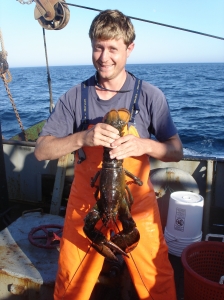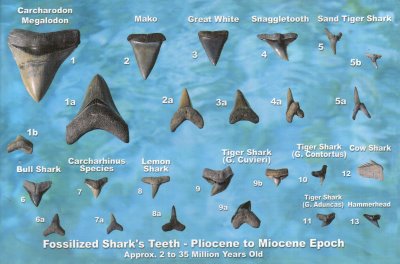Yesterday I promised more insight into one of the featured marine debris heroes as part of the “What Marine Conservationists Are Into …” series are here you have it – The Flotsam Diaries own Harold Johnson! In case you didn’t know this is a series I have been presenting each Tuesday this summer to get a special sneak peek at the many different personalities behind the scientists, activists, and educators (including bloggers) who play an integral role in the marine science conservation field. It’s essentially an extension of the overwhelmingly popular and well done Tumblr blog, This Is What A Scientist Looks Like, (BCS was featured in April of 2012!) which sets out to illustrate that scientists are not just crazy haired nerds in lab coats. I sent a list of 15 random questions and asked that each person share at least their answers to 5 of them.
 Harold Johnson, copyeditor and writer by trade, spends at least one day a week sifting beaches for other people’s litter. For fun. In March 2010, he stumbled onto a sickening scene of storm-washed debris at his local beach in southern Maine. Since then, he’s been writing as “The Flotsam Diaries,” (http://www.theflotsamdiaries.org) trying to learn about the nature of the garbage that washes into the ocean, how it got there, and what can be done about it. And then he works daily to share what he’s learned. In addition to his blog and social media, he’s got a growing body of guest posts at Scientific American online (http://blogs.scientificamerican.com/guest-blog/2012/08/16/plastics-in-the-ocean-how-dense-are-we/). His motto is “See – Learn – Change,” and he encourages everyone who visits The Flotsam Diaries to stop for a moment, look down at the ground around them, and really see what’s there.
Harold Johnson, copyeditor and writer by trade, spends at least one day a week sifting beaches for other people’s litter. For fun. In March 2010, he stumbled onto a sickening scene of storm-washed debris at his local beach in southern Maine. Since then, he’s been writing as “The Flotsam Diaries,” (http://www.theflotsamdiaries.org) trying to learn about the nature of the garbage that washes into the ocean, how it got there, and what can be done about it. And then he works daily to share what he’s learned. In addition to his blog and social media, he’s got a growing body of guest posts at Scientific American online (http://blogs.scientificamerican.com/guest-blog/2012/08/16/plastics-in-the-ocean-how-dense-are-we/). His motto is “See – Learn – Change,” and he encourages everyone who visits The Flotsam Diaries to stop for a moment, look down at the ground around them, and really see what’s there.
What is the last thing you bought that you shouldn’t have?
A new app called “Catapult King.” I really don’t need another distraction or excuse to “take 5”!
What is your favorite fruit flavor?
Blueberries. I know this because for 40 years I thought that yogurt was a curse from the yawning mouths of Hell. Yet recently I’ve fallen in love with blueberry yogurt. If blueberries can do that, they can do anything. Plus there’s nothing like discovering a secret wild blueberry barren in August, picking them to your heart’s content.
What is your favorite Sunday breakfast?
Home-made pancakes from scratch (I’ve got a recipe that comes out just like Bisquick, which is the height of good pancakes). A couple eggs over-medium. And much bacon. Crispy, smoked, delicious bacon.
Are you a night owl or a morning person?
Before fatherhood, most definitely a night-owl. But now I barely sleep past 7AM even when I can. And if I’m out past 10PM it’s a big evening.
Which sitcom character do you relate to?
Abed from “Community,” hands-down. Though friends will say, lovingly no doubt, Cliff from “Cheers.”
What is your favorite scent?
Dew-y pastureland in the Tynedale region of Northumberland, UK as the sun peeks over the Pennines and the mists hang in the valleys. There is no smell like that air.
What is your favorite pastime?
Learning. It’s such a remarkable world, my biggest thrill is discovering some new connection that I’d never made before. I love reading, but usually nonfiction. If it’s fiction I usually lose interest half-way through. Only Tolkien really holds my interest. But then again, everyone knows Hobbits are real, right? Other than that, I love exploring coasts & trails, and playing frisbee with our daughter, who has a mean wrist-flick for a 5-year-old. And she and I also play a lot of Minecraft these days. Curse those Creepers!
How superstitious are you?
I own a black cat and have broken many mirrors, so I guess not very. But I do think there is much, much more to “reality” than our senses are aware of. And I have a Zombie talisman in my car to protect me from the Zombie Apocalypse.
Are you a cat person, dog person, or neither?
Cat. I get them, and they get me. One of my secret powers is befriending truculent cats. I’m pretty sure I was a well-loved housecat once, and will be again.
What’s some other random favorite information about you?
I’ve done archaeology at 3 sites in the UK, most recently & most often at Vindolanda, a Roman fort just behind Hadrian’s Wall. I’ve taken the entire front off of a 1967 Cougar down to the engine block and successfully put it back together. I used the Internet when there were less than 1000 people on it and it was still all text. And I can bend the tips of my fingers downward without bending the other joints/knuckles.

















What people are saying …